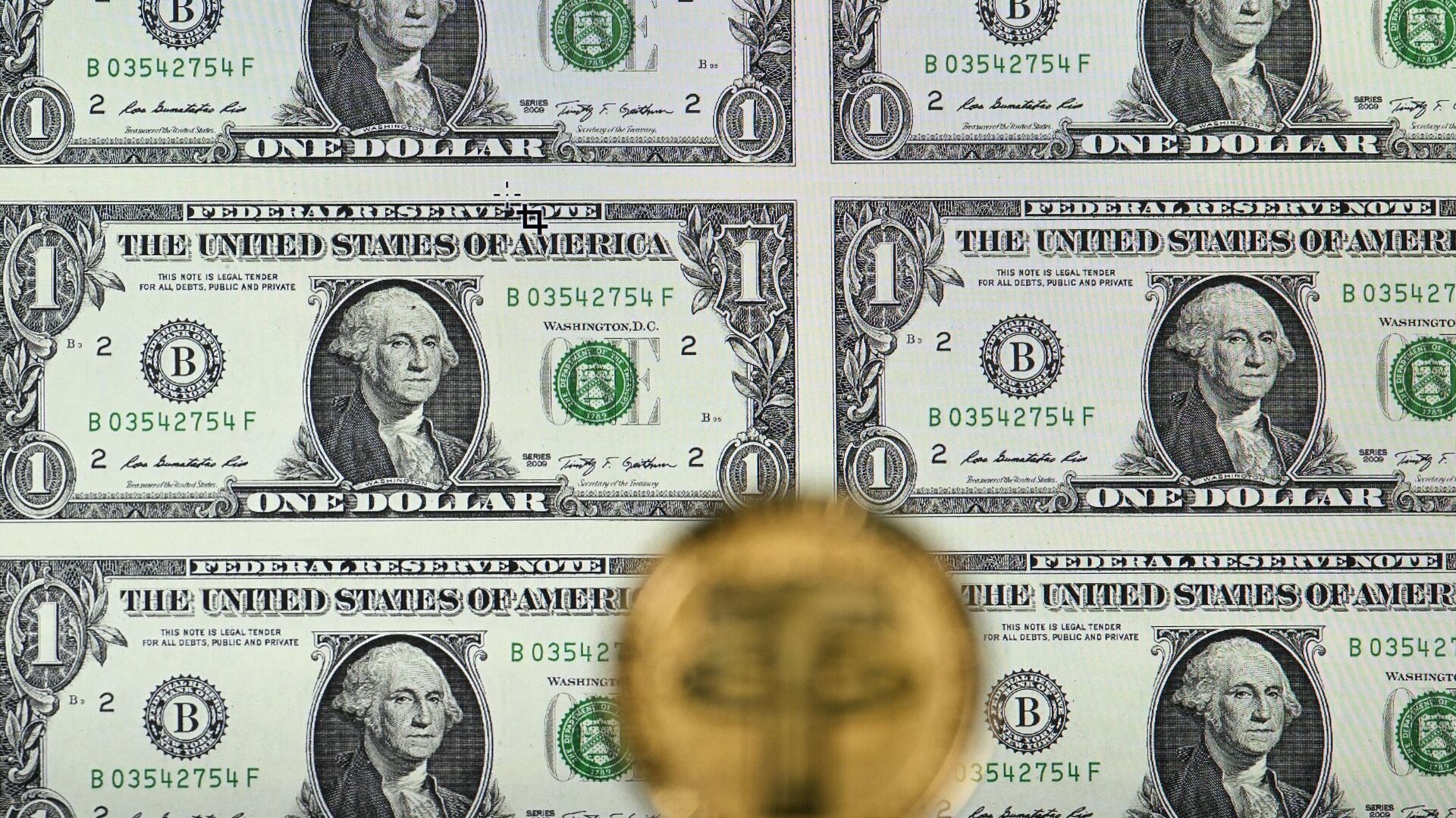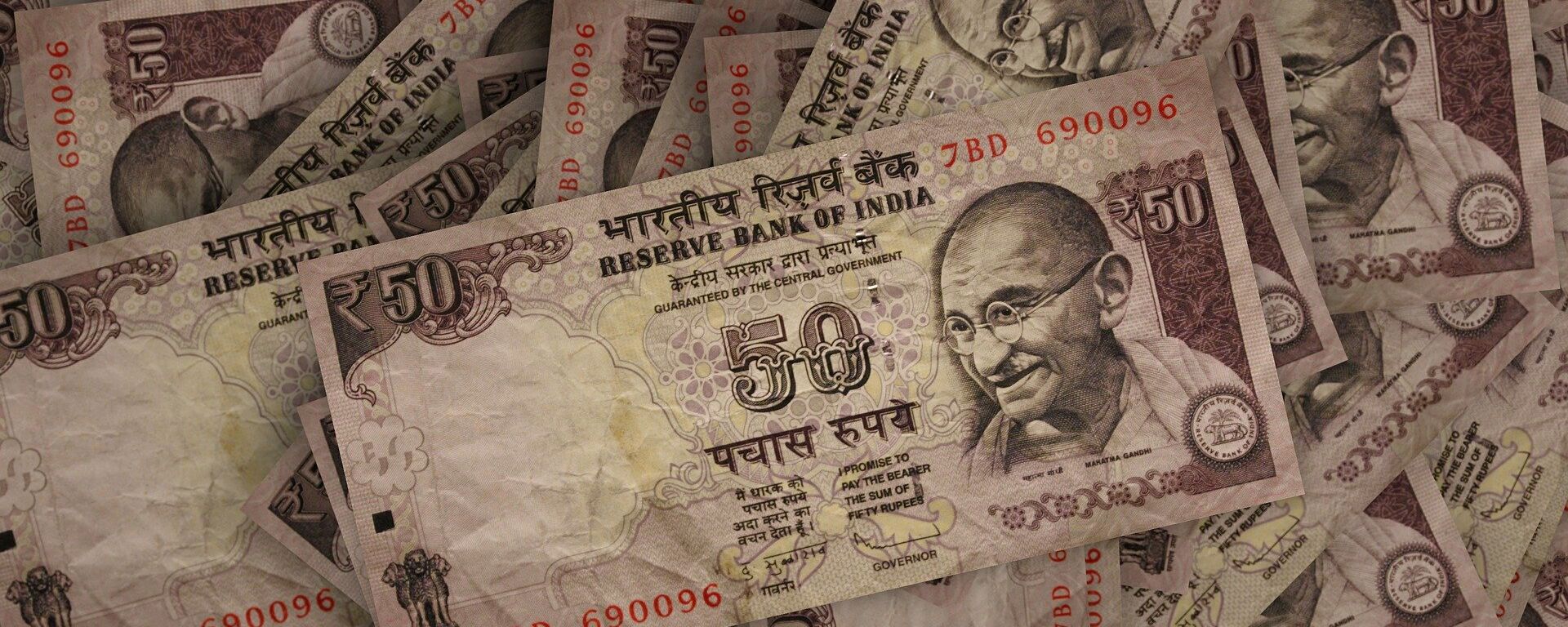https://sputniknews.in/20230822/ditching-the-petrodollar-will-benefit-global-south-expert-reckons-3764196.html
Ditching the ‘Petrodollar’ Will Benefit Global South, Expert Reckons
Ditching the ‘Petrodollar’ Will Benefit Global South, Expert Reckons
Sputnik India
India’s decision to settle the payment of a million barrels of crude imported from the United Arab Emirates (UAE) in Indian rupee (INR) instead of the US dollar (USD) for the first time ever is a major “setback” for US hegemony
2023-08-22T21:12+0530
2023-08-22T21:12+0530
2023-08-22T21:12+0530
sputnik opinion
india
uae
oil exporters
oil supplies
russian oil
oil and gas reserves
brics
2023 brics summit
russia
https://cdn1.img.sputniknews.in/img/07e7/05/12/2022261_0:160:3077:1890_1920x0_80_0_0_3e5c4549c8a13d159ada6924238682c3.jpg
India’s decision to settle the payment of a million barrels of crude imported from the United Arab Emirates (UAE) in Indian rupee (INR) instead of the US dollar (USD) for the first time ever is a major “setback” for the American global financial hegemony, an Indian economist has told Sputnik.Ashwani Mahajan, the co-convenor of Indian advocacy group Swadeshi Jagran Manch (SJM), has said that the doing away with the US dollar in crude imports represents a step in the ongoing global trend towards “de-dollarization” and increasing the use of national currencies in inter-country trade.According to official data from India’s petroleum and natural gas ministry cited in domestic media, New Delhi’s crude import bill in 2022-23 amounted to nearly $158 billion, increasing year-on-year from $121 billion in 2021-22.Mahajan noted that the persistent problem of volatility in US dollar has been influenced by US Federal Reserve’s monetary policy decisions, which in turn have been impacted by domestic economic compulsions.Mahajan stressed on the fact that the decreasing global use of American dollar has gained momentum since the G7 sanctions against Russia last February in the wake of special military operation in Ukraine.The sanctions briefly disrupted trade between Russia and many of its trading partners, including India, as bilateral transactions have traditionally been carried out in US dollar.Subsequently, the Reserve Bank of India (RBI) announced last July that it would allow foreign banks to open ‘Vostro’ accounts in Indian banks, which analysts suggest was done to bypass western sanctions.New Delhi has since said that has instituted arrangements to carry out trade in INR with at least 18 countries. India’s Foreign Trade Policy (FTP) this year said that the government would encourage trade in INR.What is Russia's Role in Reducing Petrodollar’s Influence?Mahajan said that Moscow’s economic policies have played a key role in reducing the global hegemony of the US dollar, including reducing the influence of petrodollar.According to International Energy Agency (IEA), Russia has the third-biggest crude deposit in the world.Moscow has significantly increased its crude exports to China and India, which rank among the top three importers of energy, since last year, according to official estimates.With regards to India, India and Russia have been involved in efforts to institutionalize the trade in national currencies amid difficulties being experienced in cross-border transfer due to western sanctions.The India-Russia trade hit a record high of $45 billion in 2022-23, largely on account of a surge in Russian crude exports.Indian budgetary records have suggested that New Delhi’s crude imports from Russia surged by a whopping 162 percent between 2021-22 and 2022-23. At present, Russia ranks as India’s top crude supplier.Mahajan said that Russia and India should continue to push towards jointly devising mechanisms and means to increase trade in national currencies.The leaders of three countries—India, Russia and China— as well as other developing nations will discuss means to further bolster trade in national currencies at the BRICS Summit in Johannesburg this week, according to Pretoria.The History of the ‘Petrodollar’Mahajan explained that the US dollar has been the “pre-eminent currency of global oil trade” since a deal in the 1970s between Saudi Arabia-led OPEC and Washington.He reckoned that the US, until the last decade, didn’t draw on its domestic energy stockpiles as it was benefiting from the petrodollar system.“This has helped the US maintain the hegemony of the dollar,” Mahajan remarked.
https://sputniknews.in/20230815/india-kicks-off-local-currency-trade-with-uae-with-maiden-oil-payment-in-inr-3612460.html
india
uae
russia
china
south africa
global south
Sputnik India
feedback.hindi@sputniknews.com
+74956456601
MIA „Rossiya Segodnya“
2023
Dhairya Maheshwari
https://cdn1.img.sputniknews.in/img/07e6/0c/13/138962_0:0:641:640_100x100_80_0_0_2cb44360dbcdf6d84bf4b299cd045917.jpg
Dhairya Maheshwari
https://cdn1.img.sputniknews.in/img/07e6/0c/13/138962_0:0:641:640_100x100_80_0_0_2cb44360dbcdf6d84bf4b299cd045917.jpg
News
en_IN
Sputnik India
feedback.hindi@sputniknews.com
+74956456601
MIA „Rossiya Segodnya“
Sputnik India
feedback.hindi@sputniknews.com
+74956456601
MIA „Rossiya Segodnya“
Dhairya Maheshwari
https://cdn1.img.sputniknews.in/img/07e6/0c/13/138962_0:0:641:640_100x100_80_0_0_2cb44360dbcdf6d84bf4b299cd045917.jpg
dedeollarization, india uae cepa, india uae rupee trade, india uae trade deficit, dedollarization india, dedollarization news, russian crude exports, india russia trade, india russia news, brics summit, trade in national currencies, modi news, modi in south africa, brics putin, brics xi, brics modi, india crude oil imports, india crude oil imports from russia
dedeollarization, india uae cepa, india uae rupee trade, india uae trade deficit, dedollarization india, dedollarization news, russian crude exports, india russia trade, india russia news, brics summit, trade in national currencies, modi news, modi in south africa, brics putin, brics xi, brics modi, india crude oil imports, india crude oil imports from russia
Ditching the ‘Petrodollar’ Will Benefit Global South, Expert Reckons
The US dollar reportedly witnessed a 8 percent decline in global reserves in 2022. But US Treasury Secretary has remained bullish on US dollar, saying that no currency would displace the greenback.
India’s decision to settle the payment of a million barrels of crude imported from the United Arab Emirates (UAE) in Indian rupee (INR) instead of the US dollar (USD) for the first time ever is a major “setback” for the American global financial hegemony, an Indian economist has told Sputnik.
Ashwani Mahajan, the co-convenor of Indian advocacy group Swadeshi Jagran Manch (SJM), has said that the doing away with the US dollar in crude imports represents a step in the ongoing global trend towards “de-dollarization” and increasing the use of national currencies in inter-country trade.
“The India-UAE settlement in Indian rupee sets an example for other countries in Global South. It shows that the dollar hegemony is on the decline,” Mahajan stated, adding that trading in national currencies entailed major benefits for developing nations, including the reduction in exchange rates, and making trade more “predictable and stable by reducing volatility” associated with the US dollar.
According to official data from India’s petroleum and natural gas ministry cited in domestic media, New Delhi’s crude import bill in 2022-23 amounted to nearly $158 billion, increasing year-on-year from $121 billion in 2021-22.
Mahajan noted that the persistent problem of volatility in US dollar has been influenced by US Federal Reserve’s monetary policy decisions, which in turn have been impacted by domestic economic compulsions.
“The problem with the dollar-denominated global system was two-fold. Persistent volatility in the US dollar affected other countries and their economic well-being. Secondly, most of the other countries were forced to keep their reserves in US dollars,” the Indian economist explained.
Mahajan stressed on the fact that the decreasing global use of American dollar has gained momentum since the G7 sanctions against Russia last February in the wake of special military operation in Ukraine.
The sanctions briefly disrupted trade between Russia and many of its trading partners, including India, as bilateral transactions have traditionally been carried out in US dollar.
Subsequently, the Reserve Bank of India (RBI) announced last July that it would allow foreign banks to open ‘Vostro’ accounts in Indian banks, which analysts suggest was done to bypass western sanctions.
New Delhi has since said that has instituted arrangements to carry out trade in INR with at least 18 countries. India’s Foreign Trade Policy (FTP) this year said that the government would encourage trade in INR.
India’s foreign secretary Vinay Mohan Kwatra announced this week that New Delhi would make an “extensive outreach” to the Indian business community to encourage them to trade in INR.
What is Russia's Role in Reducing Petrodollar’s Influence?
Mahajan said that Moscow’s economic policies have played a key role in reducing the global hegemony of the US dollar, including reducing the influence of petrodollar.
According to International Energy Agency (IEA), Russia has the third-biggest crude deposit in the world.
Moscow has
significantly increased its crude exports to China and India, which rank among the top three importers of energy, since last year, according to official estimates.
Russian President Vladimir Putin has said that nearly 80 percent of trade transactions between Moscow and Beijing, which hit a record high of $180 billion last year, were carried out in national currencies.
With regards to India, India and Russia have been involved in efforts to institutionalize the trade in national currencies amid difficulties being experienced in cross-border transfer due to western sanctions.
The India-Russia trade hit a record high of $45 billion in 2022-23, largely on account of a surge in Russian crude exports.
Indian budgetary records have suggested that New Delhi’s crude imports from Russia surged by a whopping 162 percent between 2021-22 and 2022-23. At present, Russia ranks as
India’s top crude supplier.
Mahajan said that Russia and India should continue to push towards jointly devising mechanisms and means to increase trade in national currencies.
“There are several ways both the countries could do that. One is by expanding Indian exports to Russia. The other way is by increasing Russian investments in Indian bond and stock markets as well as creating joint ventures in India, or by increasing Russian investments in Indian infrastructure projects,” he suggested.
The leaders of three countries—India, Russia and China— as well as other developing nations will discuss means to further
bolster trade in national currencies at the BRICS Summit in Johannesburg this week, according to Pretoria.
“BRICS could play a key role in advancing trade in national currencies,” Mahajan stated.
The History of the ‘Petrodollar’
Mahajan explained that the
US dollar has been the “pre-eminent currency of global oil trade” since a deal in the 1970s between Saudi Arabia-led OPEC and Washington.
“The use of so-called petrodollars has given an edge to the US dollar to profiteer from global crude trade without being an exporter of oil in the first place,” the academic said.
He reckoned that the US, until the last decade, didn’t draw on its domestic energy stockpiles as it was benefiting from the petrodollar system.
“This has helped the US maintain the hegemony of the dollar,” Mahajan remarked.
“It has only been in the last decade or so that the US has started to extract its own crude deposits and emerged as a net exporter of crude. This change has been driven by a realization that the world was moving towards green energy and fossil fuels may no longer be preferred sources of energy in coming decades,” the Indian expert noted.



